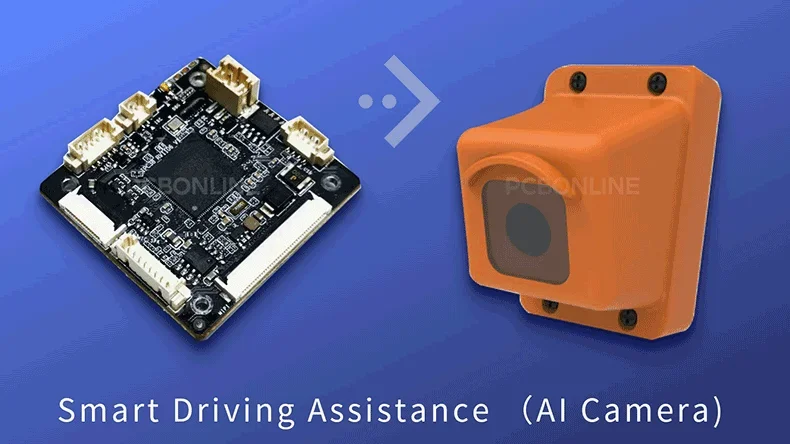
Fig: Application of embedded system and sensor interaction
At the heart of embedded systems lies their ability to interact with sensors, which act as the eyes, ears, and touchpoints of the system. In this blog, we will explore how embedded systems interact with various sensors, related things, and examples of real-world applications.
Overview of Embedded Systems and Sensors
An embedded system is a specialized computing system designed to perform specific tasks, often within a larger device. It consists of microcontrollers or microprocessors, memory, input/output interfaces, and communication peripherals.
The combination of sensors and embedded controllers enables smart, automated, and real-time systems.
In embedded systems, sensors collect physical or environmental data, such as temperature, motion, or light, and convert it into electrical signals. The data is then processed by the embedded system to make decisions or trigger actions.
Common Types of Sensors Used in Embedded Systems
Below are some common types of sensors used in embedded systems.
Temperature Sensors
- Detect ambient or surface temperatures.
- Example: LM35, DS18B20, or thermocouples.
- Application: HVAC systems, smart thermostats, and food storage monitoring.
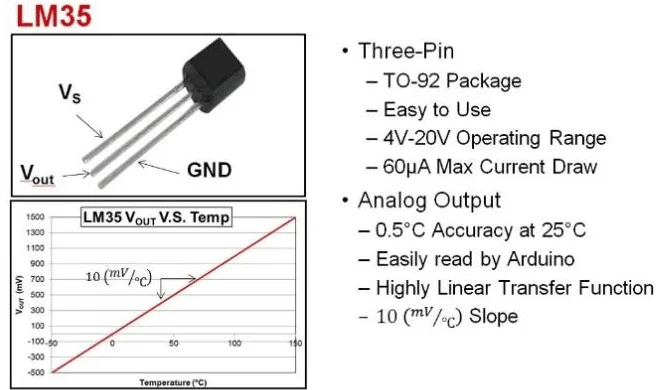
Motion Sensors
- Detect movement, acceleration, or orientation.
- Example: Accelerometers (like MPU6050), gyroscopes, and PIR sensors.
- Application: Smartphones, drones, burglar alarms, and fitness trackers.
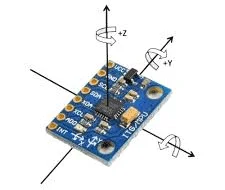
Light Sensors
- Measure ambient light intensity.
- Example: LDR (Light Dependent Resistor) or photodiodes.
- Application: Automatic lighting systems, smartphones' screen brightness control.
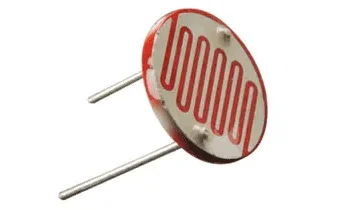
Gas Sensors
- Detect specific gases such as carbon dioxide, carbon monoxide, or methane.
- Example: MQ series sensors.
- Application: Air quality monitoring systems, industrial safety, and fire alarms.
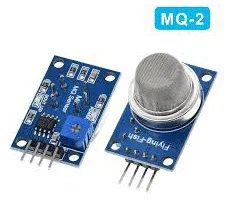
Proximity Sensors
- Detect the presence of nearby objects without physical contact.
- Example: Ultrasonic sensors or IR sensors.
- Application: Parking assistance systems, touchless switches.

Pressure Sensors
- Measure force or pressure changes in fluids or air.
- Example: BMP280, barometers, or force sensors.
- Application: Weather monitoring systems, automotive tire pressure monitoring.
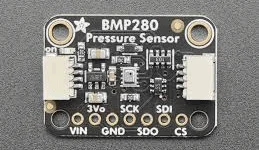
How Embedded Systems Interact with Sensors
The interaction between an embedded system and sensors involves multiple steps. Let's break down the process:
1. Sensor data acquisition
Sensors continuously capture physical data from their surroundings. The data is usually in analog form, which may need to be converted into a digital signal for processing.
For instance, a temperature sensor like the LM35 outputs a voltage proportional to temperature.
2. Signal conditioning
Sometimes, raw sensor data needs to be processed to remove noise or amplify the signal. Signal conditioning may include:
- Amplification: Boosting weak signals.
- Filtering: Removing unwanted noise.
- Linearization: Correcting the sensor's non-linear response to input.
It ensures that the sensor data is accurate and reliable for further processing.
3. Analog-to-digital conversion (ADC)
Many microcontrollers or embedded systems process only digital data. Thus, analog sensor output must be converted into a digital format using an ADC module (either built-in or external).
For example:
- A 10-bit ADC on a microcontroller can convert an analog signal into a 0–1023 range of digital values.
- Digital sensors like the DHT11 for temperature and humidity eliminate the need for ADC by directly providing a digital output.
4. Communication protocols
Once the data is converted into a digital format, it is transmitted to the embedded system for processing. Different communication protocols are used depending on the sensor type and the system's architecture:
I2C (inter-integrated circuit): Used for short-distance communication, like with accelerometers or temperature sensors.

SPI (serial peripheral interface): Faster than I2C, suitable for high-speed data transfer (e.g., pressure sensors).

UART (universal asynchronous receiver transmitter): Common in GPS modules or Bluetooth devices.

5. Data processing by the microcontroller/processor
Once the sensor data is received, the embedded system analyzes and processes it. This may involve:
- Applying algorithms to detect patterns or anomalies (e.g., detecting a sudden rise in CO levels).
- Converting raw data into user-readable formats (e.g., Fahrenheit or Celsius).
- Storing data for future reference (e.g., in memory or an SD card).
The processing might be time-sensitive, such as in real-time systems that need to act immediately (like airbags in cars).
6. Decision-making and actuation
Based on the processed data, the embedded system takes actions:
- If the temperature exceeds a limit, the embedded system triggers a cooling fan.
- When a motion sensor detects movement, a security camera turns on.
In more complex systems, decision-making involves machine learning algorithms or feedback loops that fine-tune responses over time.
Challenges in Sensor-Embedded System Integration
While sensors and embedded systems make devices smarter, there are challenges in ensuring seamless interaction:
- 1. Power consumption: Sensors and microcontrollers must operate efficiently to preserve battery life, especially in IoT devices.
- 2. Noise and interference: Accurate signal conditioning is crucial to prevent errors from environmental noise.
- 3. Calibration: Some sensors require frequent calibration to maintain accuracy over time.
- 4. Communication latency: Real-time systems need low-latency communication between sensors and controllers.
- 5. Environmental impact: Sensors may degrade over time or give inaccurate readings in extreme environments (e.g., high temperature or humidity).
Examples of Embedded Systems and Sensor Interactions
In a wide range of applications, the interaction between the embedded system and sensors plays a crucial role in achieving the device's functions. From collecting raw data to making complex decisions, the synergy between hardware, software, and sensors drives countless applications.
Smart home systems
- Embedded systems in smart thermostats interact with temperature and motion sensors to maintain the optimal temperature in the house.
- Smart lights use light sensors and motion sensors to adjust brightness based on ambient light and occupancy.
Automotive systems
- Airbags deploy upon signals from accelerometers that detect a sudden deceleration.
- Proximity sensors assist drivers during parking by alerting them about nearby obstacles.
Healthcare devices
- Heart-rate monitors use optical sensors to measure pulse and display real-time data on wearable fitness devices.
- Blood pressure monitors rely on pressure sensors for accurate measurements.
Agricultural systems
![]()
- Soil moisture sensors send data to an embedded controller, which activates irrigation systems when necessary.
- Weather stations use pressure, temperature, and humidity sensors to provide weather forecasts and alerts.
As technology continues to evolve, innovations like AI-powered embedded systems and wireless sensor networks (WSNs) will enable even more sophisticated and interconnected solutions.
One-Stop PCBA Manufacturer for Embedded Systems and IoT
Once you've figured out how the embedded system interacts with various sensors and completed the project design, you can work with the one-stop PCBA manufacturer PCBONLINE to bring your project into end devices.

Founded in 1999, PCBONLINE has two large advanced PCB manufacturing bases, one PCB assembly factory, stable supply chains, and an R&D team to provide electronics manufacturing services from development to PCBA box-build assembly under one roof.
Offers turnkey PCBA manufacturing from prototypes to PCBA box-build assembly until the final product delivery from sampling to massive production.
Besides electronics manufacturing for your embedded system and IoT project, PCBONLINE can do R&D or take part in development with you, including software and hardware development, schematic diagram, PCB layout, bill of materials, enclosure, and testing files.
PCBONLINE is a source factory manufacturer, thus the prices for electronic manufacturing services for embedded systems and IoT devices are reasonable.
High-quality embedded system and IoT PCBA manufacturing certified with ISO 9001:2015, ISO 14001:2015, IATF 16969:2016, RoHS, REACH, UL, and IPC-A-610 Class 2/3.
PCBONLINE offers free design for manufacturing (DFM) for each embedded system and IoT project and refunds the fees of R&D, prototyping/sampling, and PCBA functional testing when your project moves on to mass production.
For all projects, PCBONLINE offers one-on-one engineering support. To get a quote for your embedded system and IoT project, email contact info@pcbonline.com.
Conclusion
The interaction between embedded systems and sensors forms the backbone of modern automated and intelligent devices. With sensors becoming smaller, cheaper, and more efficient, embedded systems are poised to become more pervasive — quietly powering everything from smart homes to autonomous vehicles, ensuring a smarter, safer, and more responsive world. To make your exciting idea into reality, chat with the embedded system and IoT PCBA manufacturer PCBONLINE from the online chat window.
PCB assembly at PCBONLINE.pdf




